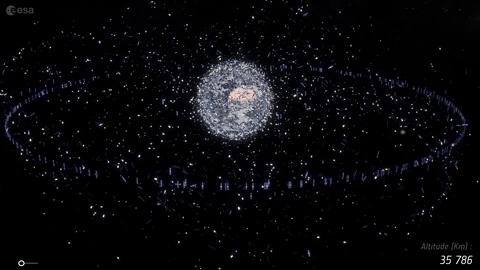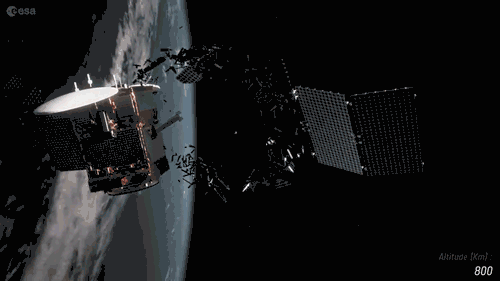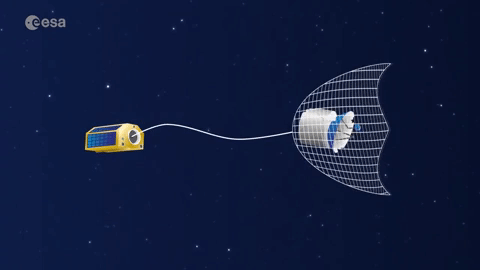Reduce, reuse, recycle. We know the drill. But how do we cope with a junkyard in space? As we are dealing with polluted oceans and endless landfills of waste on Earth, we now see a growing amount of space junk as well. This junkyard might seem far away, but can cause a chain-reaction of noticable problems on Earth. As above so below, right. So where are our space janitors? And who is responsible for recruiting them? Let's find out.

Space junk, also known as space debris or orbital debris, are human-made objects in Earth's orbit. These objects include non-functional satellites, used rocket components, fragments from disintegration, and other discarded pieces from past space missions. As the number of space missions increases, the risk of satellite collisions with these debris becomes more likely. This could lead to disrupted communication of navigation or weather monitoring systems here on earth.
The most critical period contributing to the current space debris problem is associated with the rapid increase in space activities during the latter half of the 20th century, occurring from the 1960s to the early 2000s
How did this happen? The most critical period contributing to the current space debris problem is associated with the rapid increase in space activities during the latter half of the 20th century, occurring from the 1960s to the early 2000s. Back in the 1960’s Space Race, humans were far too busy playing cosmic pioneers to consider the interstellar aftermath. Key events contributing to space debris include satellite launches, the deployment of space stations, and the intentional destruction of certain satellites. While ongoing space activities continue to generate new debris, the historical buildup during this period remains a significant factor in the overall space debris population.

The result? A space junkyard, consisting of 36500 space debris objects greater than 10 cm, accompanied by 130 million additional smaller parts. Space junk poses a potential threat to operational satellites, space stations, and other spacecrafts as they travel through Earth's orbit. Collisions with even the smallest pieces can create a domino effect in space. We call this the Kessler Syndrome, a phenomenon where one collision between satellites creates debris that will lead to more collisions, making it risky and crowded for other satellites to operate in certain orbits.
Space junk poses a potential threat to operational satellites, space stations, and other spacecraft as they travel through Earth's orbit
So who is responsible for cleaning up our cosmic backyard? Well, no one specifically yet. Cleaning up space debris will have to become a shared job, with different countries and space agencies that will have to work together in order to figure out how to tidy up the mess we collectively created.

Various technologies are being proposed for cleaning up space debris include harpoon systems and nets for capture, electrodynamic tethers, as well as experimental missions like the RemoveDEBRIS satellite. This satellite tested a net and harpoon system to demonstrate debris removal capabilities. These technologies aim to address the growing issue of space debris and mitigate potential risks to operational satellites and future space missions.
The Zero Debris Charter serves a global initiative for all space entities to sign and follow towards the shared goal of a Zero Debris future
So, as we navigate our cosmic backyard, the debris dilemma still remains up in the air. No official cosmic custodian yet, but new initiatives are luckily emerging. The European Space Agency for example, released their Zero Debris Charter this november. This document serves a global initiative for all space entities to sign and follow towards the shared goal of a Zero Debris future. It focusses on developing ground-breaking technologies for satellite end-of-life disposal, in-orbit servicing and active debris removal.

Share your thoughts and join the technology debate!
Be the first to comment